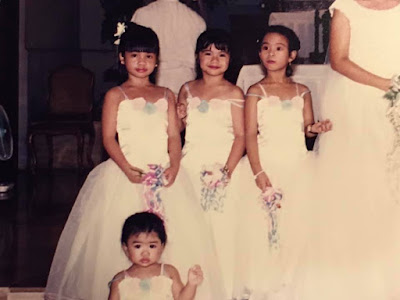I and my wife who was born in Silay City, Negros Island, had a wedding ceremony in April 1998 at a church in Bacolod, the capital of Negros Occidental. Shortly before that, many women called "Japayuki" who entered Japan from the Philippines were working. Some Japayuki were overstayed or forced to work as sex workers by yakuza. Therefore, it became a serious social problem in Japan.
As a result, in the 1990s, it was very difficult to enter Japan from the Philippines with an entertainment visa, and was said that 99% impossible for especially young Filipino women, to obtain a tourist visa.
Moreover, even Filipinos who legally married Japanese were suspected of fake marriage and required very strict immigration. In the case of me and my wife as well, I went through complicated procedures such as translating the marriage certificate issued in the Philippines into Japanese and submitted the necessary documents to the Ministry of Foreign Affairs of Japan. It was like harassment.
And the most stressful thing was that I had no way to know how long it would take from the receipt of the documents to the end of the visa review. I've heard that some couples have been waiting for more than a year or refused to issue a visa for no apparent reason, even though they paid a high fee to the intermediary to complete the paperwork.
Fortunately, less than four months after we got married, my wife got a visa to enter Japan. The people around me who had been married to Filipinos were surprised at the miraculously short period of time. My wife was a researcher at the University of the Philippines, and I was an employee of Panasonic, which may have made the procedure smoother.
The above became clear later. Before we got married, we had no idea what to expect, so we had no choice but to have a wedding in the Philippines first, not in Japan. This meant that few guests from Japan could attend our wedding. This is because the airfare from Japan to the Philippines was very expensive in an era when there were no low-cost carriers yet.
In the end, there were only 7 Japanese attendees, including my family, while my wife had more than 200 relatives and friends. What a big event!
Then, I left all the preparations for the wedding and reception, such as booking church and hotel, arranging meals and photographer, to my wife. Only things I did were to buy my suit and bring the cash for our wedding from Japan.
I did not know what a wedding in the Philippines would look like. Nowadays, the roles of "Made of Honor" or "Best Man" known in Japan were not so common 20 years ago. My wife gave me a lecture on all the setup since I arrived in Negros. She was the perfect wedding planner.
What impressed me most was that white clothing, which only brides are allowed to wear in Japan, is a common costume for wedding guests in the Philippines, regardless of age or gender. And on the day of the wedding, it was the flower girls dressed in such white dresses that soothed my heart. (At last, I reached today's subject!)
To write this article, I pulled a wedding photo album from my bookshelf. How cute our flower girls, who were still in the lower grades of elementary school. They were just angels. In fact, a few days ago, in this photo, the girl Zennia, who is on the far left, told me that she had passed the national examination to become a doctor.
Twenty-two years later, she has become a charming woman who loves Japanese anime and Korean stars. She is not a relative, but the only daughter of my wife's best friend. Now she is with her family in Iloilo, next to Negros.
So, I was planning to focus on Zennia who will finally become a doctor, and write in detail, but the prelude had been too long, I will continue to the next article.


0 件のコメント:
コメントを投稿